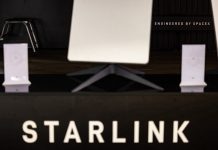Russia and the US have agreed on a joint Venus exploration mission, Roscosmos space agency chief Dmitry Rogozin said. “We agreed with the Americans on a joint mission to Venus,” Rogozin said on the Soloviev Live YouTube show on Saturday.
Russia plans to send the Venera-D probe to Venus in November 2029. The mission was initially planned as a Russia-US venture. Last year, however, Roscosmos said that the Venera-D mission was going to be an independent national project and was not expected to attract significant international cooperation.
Russia is also aiming to send a Venus exploration mission in June, 2031, and another one in June, 2034, in order to study the planet’s atmosphere and, possibly, collect some soil samples.
In June, a NASA spokesperson told Sputnik that the US space agency was ready to discuss further plans for Venus exploration with Russia.
According to NASA, the US is planning two missions to Venus with launches expected in the 2028-2030 timeframe. Deep Atmosphere Venus Investigation of Noble gases, Chemistry and Imaging (DAVINCI+) consists of a probe that will descend into the Venus’ shrouded atmosphere. A second mission dubbed Venus Emissivity, Radio Science, InSAR, Topography, and Spectroscopy (VERITAS) will orbit the planet with a synthetic aperture radar able to penetrate clouds that hide the planet’s surface from astronomers on Earth.

Earlier, Roscosmos had reportedly allocated 318 million rubles ($4.3 million) for the development of an automatic space station for Venus exploration, according to the country’s public procurement website.
Venera-D will be the first Venus probe launched by Russia. The contract between Roscosmos and the state-owned Lavochkin Research and Production Association envisages spending of 318.2 million rubles until March 2023.
According to the public procurement website, the company will have to “substantiate the feasibility of the mission and possible design solutions that ensure the study of the atmosphere, surface, internal structure and surrounding plasma of Venus at a modern scientific and technical level,” as well as “explore the possibility of returning Venus soil, atmosphere and aerosols samples to Earth.”
In March, the Space Research Institute’s planetary scientist Ludmila Zasova told Sputnik that Russia had already started designing its Venera-D spacecraft, which would be tasked with studying the surface of Venus.
Deputy Director of the Space Research Institute of the Russian Academy of Sciences Oleg Korablev said in an interview that Russia does not plan to follow suit with the US and Europe to send an unmanned mission to Jupiter, as it is currently focused on exploring Venus.
Beginning in the mid-1980s, Moscow has repeatedly attempted to send a probe to the solar system’s largest planet, including a joint mission with the EU and the US. All projects were eventually scrapped due to insufficient technologies.
“As a result, our part [of the joint project] ‘died away,’ and the US and European parts were divided, becoming, respectively, the Europa Clipper and JUICE [missions]. It would be tempting to return to this project now, but Venus was chosen as our main vector, taking into account all financial constraints,” Korablev said.
US Explores
Earlier, NASA has stated that two US missions to the planet Venus – possibly the first habitable planet in our solar system – will study how it became hothouse incapable of supporting life,
“The missions aim to understand how Venus became an inferno-like world when it has so many other characteristics similar to ours – and may have been the first habitable world in the solar system, complete with an ocean and Earth-like climate,” NASA said in a press release on Wednesday.

A mission named Deep Atmosphere Venus Investigation of Noble gases, Chemistry and Imaging (DAVINCI+) consists of a probe that will descend into the Venus’ shrouded atmosphere. Here, scientists hope to learn how the planet formed and evolved, as well as to determine whether the world ever had an ocean, the release said.
A second mission dubbed Venus Emissivity, Radio Science, InSAR, Topography, and Spectroscopy (VERITAS) will orbit the planet with a synthetic aperture radar able to penetrate clouds that hide the planet’s surface from astronomers on Earth, the release added.
NASA explained in the release that VERITAS will map Venus’ surface to determine the planet’s geologic history and understand why it developed so differently than Earth.
The satellite will also map infrared emissions from Venus’ surface to identify and map its rock type, which is largely unknown, and determine whether active volcanoes are releasing water vapor into the atmosphere, the release said.
“We’re revving up our planetary science program with intense exploration of a world that NASA hasn’t visited in over 30 years,” NASA Associate Administrator for Science Thomas Zurbuchen said in the release. “Using cutting-edge technologies that NASA has developed and refined over many years of missions and technology programs, we’re ushering in a new decade of Venus to understand how an Earth-like planet can become a hothouse.”
NASA is budgeting about $500 million to develop each mission, with launches expected in the 2028-2030 timeframe, according to the release.
- Via Sputnik News Agency
- Follow EurAsian Times on Google News




